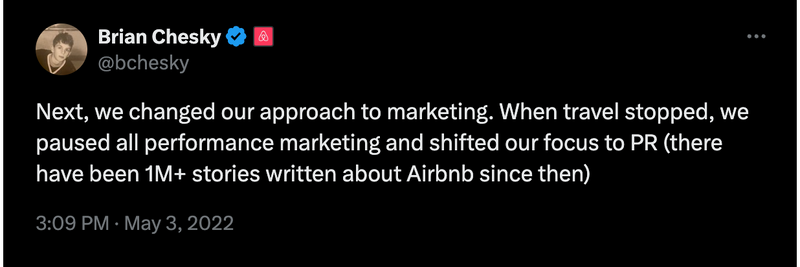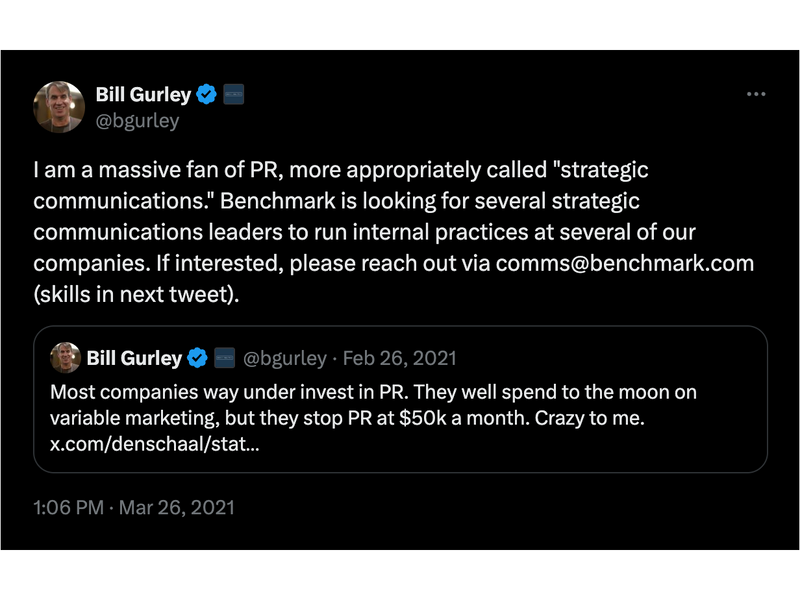Startup PR, Part I: the rules of the game
Introduction
This post is the rulebook I wish someone handed me earlier in my career about PR and working with journalists.
You wouldn’t expect to do well playing Settlers of Catan — or even be able to talk strategy — without first reading the rulebook, and the same is true for doing PR. It’s a complicated game with idiosyncratic rules.
This post is about those rules: how to interact with journalists, the jargon you need to know, and key mental models.
If all you’re looking for is press coverage for your upcoming launch: close this page, reach out to your friends and investors asking for PR firm recommendations, and go hire the best one. (Or wait for Part II, where I cover how I’d get that coverage myself.)
But if you want to understand the rules of the peculiar, opaque game of business journalism — so that you can then play the game well — read on. This post will be a shortcut for you (a long shortcut, but a shortcut nonetheless!).
Also: this isn’t about the hard work of figuring out your story, goals, and positioning — which are the most important parts of doing PR well. I assume you’ve got that sorted out, and now you’re trying to figure out how to use traditional media to amplify those ideas.

Why learn the game of PR?
I’ve found traditional media coverage to be tremendously useful.
Many team members, customers, and investors have found my companies thanks to our PR efforts. And the coverage isn’t just great for top-of-funnel — it also helps close people once they’re interested. It can impact how your brand is perceived in the market, reach specific audiences, and give you the collateral and validation to close deals, investors, hires, and more.
Done right, PR actually does work — and is worth the effort and expense.
And I’m not the only one who thinks this.


Plus: it’s just really interesting. At some level — whether you like it or not — the world runs on media. For better or for worse, the “fourth estate” governs how the vast majority of people build their beliefs and learn about what’s happening around them.
And yet I’ve found many leaders simply haven’t taken the time to learn how it works. I find it a game worth learning — and playing.
A note on “Going Direct”
As of publish time (late 2024), we’re in the age of “going direct” — an approach to communications popularized by Andreessen Horowitz and Lulu Cheng Meservey. It broadly advocates for owning your communications, minimizing engagement with traditional media, and focusing on more-direct, less-intermediated channels.
I love this strategy.
But I also believe that for many companies, there’s still a strong case for more traditional PR and media engagement — whether alongside a “go direct” strategy or not.
This post is not about whether you should go direct (you probably should). This post is about the traditional side of the game — which will affect you whether you like it or not.

Game terminology & basic rules
Before you learn the rules and norms, you need to speak the language.
What is “PR?”
Technically, Public Relations (PR) is a broad category, including media relations, messaging strategy, owned content, crisis communications, and more.
But many people think of PR as just “media relations,” which is mostly an innuendo for “getting articles written about us.” That’s what this post is about.
Other people refer to the broader category as “Communications” or “Strategic Comms.”
Often, internally at a company, you’ll have a Communications function (and perhaps, if you’re big enough, sub-functions like Corporate Comms, Product Comms, Internal Comms, Executive Comms…). And then externally, you’ll hire “PR” firms.
None of this really matters, in my opinion, and you can argue about the ever-changing definitions all day. I’ll use several of these terms interchangeably in this post, but mainly lean on “PR.”
Ultimately, this whole post is about the art and science of interacting with journalists and getting media coverage. That’s probably more accurately referred to as “Media Relations,” but few have heard that term, so “PR” it is!
Types of stories, publications, and mentions
There are generally three types of stories:
- Trend pieces: these are pieces that are not about a specific company or piece of news, but rather about a broader trend (“how AI startups are contending with the chip shortage”)
- News articles: these are about a specific event — a fundraise, a hire, an acquisition, etc.
- Profile pieces: these are in-depth articles about a company or person. Sometimes they are anchored in a piece of news, but they go beyond the news to more deeply profile the subject.
Those are listed in order of difficulty to get yourself into. Journalists always want to cover trends, and if you’re relevant to the trend, you can try to insert yourself. But of course, you have to have a good enough relationship with the reporter to know they’re writing the piece — or you have to be so relevant to the trend that they can’t help but reach out to you.
They’re a little more skeptical of covering news. And they’re most hesitant to do a big profile story (there are also simply fewer reporters who have the latitude or responsibility to write those sorts of pieces).
Aside from the three types of stories, there are different types of publications. Broadly, the ones that are relevant to tech startups fall into:
- Trade publications / industry publications: these are specific to the industry your company is addressing. For logistics: FreightWaves. For advertising: AdWeek. For legal: Law360. For crypto: Coindesk. And so on… (there are usually several big ones in each industry)
- Tech / startup media: TechCrunch, The Verge, etc.
- Mainstream media: WSJ, NYT, CNBC, etc.
These are also listed in order of difficulty. It’s easiest to get covered in a trade publication, harder in the tech / startup media, and hardest in the mainstream media.
So: profile piece in the mainstream media? Hardest type of story to pull off. Being in a trend piece in a trade publication? Easiest one.
And that brings us to a final division of media participation: the three ways you or your startup can be covered/mentioned in the piece:
- Subject: most of this guide is going to cover being the subject of the story. That means being one of the featured examples in a trend piece, or the source of the news in a news article, or the subject of a profile piece.
- Ancillary mention: sometimes, your startup will be mentioned in a piece about something else — perhaps a story about a venture fund that happened to invest in you or in a competitor, or in a newsletter or “rollup.” You often will not even hear from the journalist before this happens.
- Expert/quote: you can be quoted by the journalist in a story that’s not about you — but where they see you as an expert.
That last category is a nice piece of “bonus” coverage where your company gets mentioned and you are positioned as a smart person. It usually happens in one of two ways:
- You have a relationship with the journalist and they reach out to you about a story they’re writing because they think you’d have genuinely interesting thoughts
- Your PR team (a firm or internal) is “newsjacking” — when other news is happening, they reach out to journalists likely to cover it and say “I’m sure you’re writing about Apple’s earnings — our client Jane would have great perspective on that given her business. Want to talk to her?” or even “I’m sure you’re writing about Apple’s earnings — here’s what our client Jane has to say about them: [quote]. Let us know if you’d like to connect with her, or feel free to use that quote.”

On — or off — the record
There are three ways you can talk to a reporter: on the record, on background, or off the record. Critically, if you don’t want to be “on the record,” you need to make that agreement with a reporter before you start talking to them. Everything is on the record unless mutually agreed otherwise. This is among the most important rules of dealing with journalists.
The word “mutual” is key there: you can’t just email someone or talk to them and say “this is off the record…” and have it be so. They have to agree.
On the record means that anything you say can be quoted, attributed to you. When you see “… said Tim Cook, CEO of Apple,” Tim was on the record. Again, this is the default unless mutually agreed-to otherwise.
On background is a little nebulous. It generally means that what you say can be directly quoted, but not attributed to you by name. When you see “… said a senior executive at Apple,” that executive was “on background.”
The best way to manage being on background is to mutually agree with the reporter that what you’re saying is “on background,” and then agree on a way to characterize you.
You: Ok, and… can I share the next bit with you on background?
Reporter: Sure
You: Great. Does it work to attribute it to “a company spokesperson?”
Reporter: That’s fine with me
This could be “a company spokesperson,” “a person familiar with the discussions,” “a source close to the matter,” “a senior executive at the company,” “someone who is familiar with Tim’s thinking,” etc.
Anytime you see one of those phrases in a story, it’s because the speaker went on background.
Last, off the record means that the information you share cannot be put in the piece at all, and — really, in the strictest sense — should not be written down or repeated to anyone (including the journalist’s colleagues).
The degree of adherence to this rule varies journalist to journalist and outlet to outlet, so I suggest, to be safe, assuming the minimum when deciding what to share off the record: that you will not be named or characterized alongside the information, but that the information might still make it into the piece anyway.
If the information can’t be put in a piece, why would journalists ever want it? Because it gives them clues that can help them figure out who else to call or where else to look while they’re reporting a story.
If it’s a good piece of information shared off the record, they’ll probably start calling around to other people who might have the same info and try to get them to say it on background or on the record (but, if adhering to strict ethics, without disclosing that they already know it).
Is your head spinning yet? It goes even deeper with “not for attribution” or “with quote checks” or “on deep background” — but we don’t need to get into those.
Embargoes and Exclusives
When trying to get coverage, embargoes and exclusives are two powerful tools.
An embargo is an agreement between you and a reporter that they will not publish anything about your news until a certain date and time. Just like going on background or off the record, this must be agreed to before you share the information. If you share information before agreeing, it is not “under embargo.”
This leads to a challenging situation: you want to get a reporter excited and on the phone to hear the pitch from you, but you don’t want to tell them what the news is. So you’re left with something like:
If you don’t have a good existing relationship, or that pitch isn’t otherwise very newsworthy (more on that term in a second), they might just ignore it. You can take a shot just putting the news in the outreach and request an embargo, but you have to be aware that they might decide to just publish it before the embargo date, since it was never agreed to.
They might agree to the embargo to hear the pitch. Or, they might reply:
An exclusive means that you are only giving the information to a single journalist or outlet in advance of the news breaking. This is what reporters want — they don’t want to be one of many covering the same story with the same information. When we get further, we’ll see that this can be a major point of leverage for getting coverage.
If you want a top-tier publication to cover something, you often have to give them an exclusive.
There are also variations on this — you could try to get by with not-quite-a-full-exclusive, but a partial exclusive. Perhaps: “the story isn’t an exclusive, but I could give you an exclusive interview with the lead investor” (i.e. you will pitch the story to several outlets, but won’t set the lead investor up with anyone else). Or “the story isn’t an exclusive, but we can exclusively give you some metrics on pre-launch signups” (i.e. no other outlets will get those numbers in advance).
After the news breaks — at the embargo time, or whenever it comes out if an embargo isn’t set — you’re free to talk to whoever you want and seek out follow-on coverage. There’s no more exclusivity at that point. But before then, if you agree to an exclusive, you can’t talk to anyone else.
What’s “Newsworthy?”
Perhaps the most important concept for founders to understand: reporters will only cover stories that are newsworthy.
This means, tautologically, exactly what it sounds like: newspeople working for news publications will only cover news that deserves to be in the news.
But what is newsworthy? How can you make something seem newsworthy to a reporter? What “deserves to be in the news?”
It needs to be content that readers of that publication will be interested to read, in the journalist (and their editor’s) subjective opinion. To get a sense of what’s newsworthy for a specific journalist or publication, you can simply check out what they’ve published historically.
Newsworthiness is not a binary. It’s about stacking as much as you can to push the story over the newsworthy line.
Here are some things that can contribute to a story being newsworthy:
- Objective not subjective
- Big names
- Quantitative
- Publication-specific context
- Relationships
- Your pitch
Objective not subjective: it’s not newsworthy to say “the best new CRM just launched” — that’s just an opinion, and journalists aren’t in the business of covering your opinion about your business. “The first CRM built for the construction industry?” More objective, better chance of getting covered.
Big names: if there’s a company that everyone cares about, most things having to do with that company are instantly newsworthy.
For example: every feature Facebook launches gets coverage in tech blogs, because Facebook itself is inherently newsworthy. Your fledgling social network’s new features are not inherently newsworthy (even if they’re better than Facebook’s!).
Another example: if Sequoia Capital does a deal, that fundraise will get coverage in startup publications, because Sequoia itself is inherently newsworthy. A fundraise from a smaller VC may not.
Quantitative: the more compelling numbers you can share, the more newsworthy your pitch is. “We’re growing fast!” doesn’t do much for you; “we’re adding 20% more customers per day than [incumbent] — more than 60 a day!” is catnip (notice that touches both “quantitative” and “big names”).
Publication-specific context: think about the readers of the publication you’re pitching. If it’s TechCrunch, maybe the investors in the fundraising round are the most compelling thing. If it’s Bloomberg, maybe it’s how you’re beating the incumbents. If it’s a trade publication, maybe it’s the details of your product innovation.
Relationships: I’ll get to this more later, but your relationship with the reporter can push the balance of the newsworthiness. If they see you as a valuable source or someone they want to build a good relationship with, they are more likely to say something otherwise-borderline is newsworthy (although it still has to make it past the editors!).
Your pitch: you should, of course, be a pro at pitching your company. You’ve gotten people to join your team, perhaps raised money, and convinced customers to sign up. At the end of the day, if you can convince a journalist that your company or the news is groundbreaking and needs to be covered for their audience… you’ve got a newsworthy story. So: flex that persuasive muscle.
Really, there’s so much more than this. The best question to ask is the general one: why will readers care?
Reporters want to cover things that feel like — and are — actually interesting news. So figure out what in your story makes it so.
“Yet another SaaS company raised a seed round” = not interesting by itself. Why should people care?
If you read the stories that get written, you’ll almost always see some sort of “hook” that tells the reader why they should care about the story. Think about what that looks like for you and your news.
My most frequent feedback to founders asking for PR advice: “what you’re pitching is not newsworthy, even thought it feels like the most important thing in the world to you. Figure out why the reporter should care, or otherwise don’t waste time trying to get it covered.”
I can’t overstate how important the idea of newsworthiness is to getting coverage. If the reporter and their editor don’t think your story is newsworthy, it won’t get covered. Simple as that.

Strategically interacting with journalists
There’s an art to building and maintaining relationships with journalists. This is one of the things that separates truly exceptional PR people from the merely good ones.
I find these relationships really interesting, especially in a time where the industry/media relationship as a whole is getting rocky (the pendulum tends to swing over the course of decades…).
Here are a few principles to consider:
Journalists are just people like you — there’s a lot of talk in tech these days about the evils of journalism, and in some cases, for very good reason. But at the end of the day, individual journalists are just plain ol’ human beings.
Many founders feel like they need to give stiff, tightly-scripted pitches to journalists. But, at their core, journalists want the same things everyone else does: enjoyable conversations, pleasant relationships, and not being yelled at.
They also listen to pitches all day. They have a finely tuned sense for when you’re just giving a spiel. And (as with any conversation) that’s fine sometimes. But if it’s the whole conversation, they probably won’t leave with a warm fuzzy feeling.
And related to that: they’re good at sniffing bullshit. First of all: they hear a lot of it. But second: if they suspect bullshit, their job is literally to spend the entire day calling as many people as they can to find out if it’s true or not. (Because them being bullshitted and then finding out makes for an awfully good story — for them, not for you.)
So most of all, when you’re talking to them, remember that they’re people too. It sounds silly, but I’ve seen far too many founders fail to get coverage — or worse — by treating journalists like story-writing machines and nothing more.
… but they (mostly) aren’t your friends — with the above said… by default, they aren’t your friend. They’re a business relationship. You may be friendly with them, but you need to remember their incentives.
In a sense, it’s like your relationship with your direct competitors’ CEOs.
Friendly? Sometimes! Will you talk shop with them? Sure. Are there ways you can help each other and build a relationship? Yep. But you also need to remember that if you share your recent big insight or customer feedback, it’s probably going to end up on their product roadmap too.
Journalists are the same. They’re mostly not out to screw you (although some are). But if you give them something too good, they won’t hesitate. That’s because…
They’re doing expected value math — by default, most journalists want to retain a neutral/positive relationship with you.
This is because they get rewarded (career-wise) for scoops — being the first to break a piece of news that others haven’t found yet. So they want to be the person you call when you have news. That doesn’t mean they’ll go overboard on positivity, but does means they (again, mostly) won’t just be randomly negative for little gain.
But, if an opportunity to write big, splashy negative stories presents itself, they will quickly decide to do so — because now they see more (career and peer-approval) upside to writing those stories.
The value of writing about your scandal, or the salacious thing you mentioned to them in passing, or the gossip about a competitor you accidentally said on the record becomes greater than the value of keeping you as a friendly source.
This is sometimes called a journalist burning you.
It’s a dilemma — sometimes you (usually accidentally) give them something so good that they have to burn you. And this is one place where the dislike of journalists can arise.
It’s an iterated game of agreements — dealing with journalists is a series of agreements, trust, and building a relationship (just like anything else, really).
And — as evidenced by how far we are into this article, basically just covering terminology so far — the game you play with journalists has a lot of very idiosyncratic rules.
The rules aren’t hard-and-fast. It’s not like the second you say something on the record they publish it. You can even say “oh, jeez, sorry — can that be off the record? I shouldn’t have said that.”
If your relationship is good and the expected value calculation is positive for the journalist, they’ll laugh and say “yeah, no problem.”
If the expected value calculation goes the other way, they might say “sorry, I’m going to keep that on the record.”
That’s how life goes when you play games. Keep the long-term game in mind.
(And it goes the other way too: if you lie to a journalist and get caught, you can be sure they’re going to be less friendly in the future.)
They want interesting info — they’re in the business of finding newsworthy stories and writing about them. They don’t want to cover fundraising announcements all day — they want to be doing deeper journalism.
So if you have a piece of information that might be interesting, it can be worth giving it to them. Maybe you’re hearing rumors of an acquisition, or something going on in your industry.
Reaching out and saying “hey, I’m hearing some interesting stuff about [company], thought you might be interested. Can we chat off the record [or on background]?” is a great way to build a relationship (if the information is actually interesting and especially if it’s not purely self-serving.)
They cover what they want to cover — everyone wishes that journalists would just use the quotes they want them to. But… that’s not how it works.
They can slice up your quotes, take pieces, remove the self-promotional part, etc. — so never assume when you give a quote that it will be printed in full (or at all!).
You need to be okay with any fragment coming out.
You’ll make mistakes — it’s like buying a car from a dealership. The car salesman is practicing for the interaction 8 hours a day. You do it once every five years. They’ve got the upper hand.
Journalists live and breathe the rules of the “journalistic engagement game.” You do it occasionally. Hopefully this article helps you do it well — like reading up on negotiating at a dealership — but you’ll still make mistakes every now and then, and probably get screwed a few times. Such is life.
It’s all about the relationships — they call it “media relations” for a reason.
The game of dealing with journalists has its own rules, but at the end of the day, it’s just relationships — same as when you’re raising money, hiring candidates, closing deals…

3rd-party players: PR firms
As discussed above, Public Relations (PR) is a broad discipline. But, as we’ve spent this entire article assuming, the term “PR” is often used by founders who really mean Media Relations. And Media Relations is itself a polite way of saying “getting articles written about us.” And ultimately, that’s usually what founders are talking about when they reference “PR” — it’s what they really want.
Most PR firms — to justify their large retainers, often $10-50k per month — don’t want to be pigeonholed into just Media Relations. That would be too narrow and too measurable. So instead, they insist on doing more than that. It’s a “bundle,” like paying $70/month for cable TV when really all you want and will watch is one channel.
The best PR firms know the demand for media relations, and they won’t accept unbundling their services, nor will they take a one-month engagement just around your upcoming launch — they’ll only sell you the whole shebang, and for a 3-6 month term, or longer.
That’s not to say that PR firms aren’t useful for anything beyond media relations. The other services certainly can be helpful if you’re working with a truly great firm. But what most founders want is media relations, and you gotta pay the price for that…
You have three options for PR: hire a PR firm, do it yourself, or hire internally.
Despite now having a decade-plus of experience dealing with reporters and a bunch of great relationships with many of them, I still think hiring a PR firm is the way to go initially.
(That said: I think most PR firms are pretty bad, unfortunately. You need to find the great ones.)
As you scale, you’ll also build out an internal comms team. But even when that exists, I think most companies — at least those who have decided media coverage is strategic for them — should have an external PR firm as well.
The core reason: in the iterated game of media relations, PR firms will simply have more at-bats with reporters. They have more reasons to call them!
A reporter only wants to hear from you or your in-house flacka nickname for PR / comms people. so many times a month. But the PR firm — assuming they have a bunch of relevant clients — will have many reasons to be in touch.
That means they’ll build a deeper relationship with the reporter, they’ll have more reasons for the reporter not to burn them, and they’ll have a broader network of reporters and editors to go to. Plus, they’ll know what people like and don’t like.
(Of course, the PR firm also has their own incentives — they’re an independent actor in the “game.” Unless you’re a marquee client or paying them their highest retainer, they may not always act in your best interests. That might mean pushing another one of their clients more than you, or, in the worst case, screwing you over to preserve a journalist relationship. Again: you need to find the best firms, same as any other role!)
Hiring a PR firm
Chase down the firms who have delivered great results. The best way, of course, is through friends, fellow founders, or investors who have seen those results.
The other way is to find startups who have done well with PR, and then find their published press releases on PRNewswire or similar sites. Very often, you’ll see a “media contact” listed at the bottom of the press release — and it’ll be a PR firm’s email address (usually something like acme@theprfirm.com). Reach out to that firm!
PR firms are experts at messaging and making things sound good — that’s their job — so it can be very hard to assess who is good and who isn’t from the web presence, or even from a first meeting.
Plus, you run into the eternal problem with agencies: the people you talk to are rarely the ones who actually end up working on the account.
In the process of interviewing a PR firm, you need to get the people who will be working on your account on the phone and interview them directly (as a group is fine). Get their ideas and reactions in real-time.
All too often, PR firms will use their senior people to prep really great pitches to potential clients, and then the juniors end up working on the account and never have ideas that are as good.
So, after your first get-to-know-you call, ask for a call with the people who would be active on the account and talk to them.
If they have good ideas, good instincts, and have individually delivered good results — that’s what you’re looking for.
Make sure you ask clear questions — and memorialize the answers in emails or contracts — about exactly how the different people will be involved. Will the senior person be on every weekly call? Or will they just be “overseeing” things?
And then, of course, run some references on them — asking for clients that have worked with the specific team members on your account.
The cost of PR firms
The cost of a PR firm varies wildly. You can hire cheap ones, but I’ve found you pretty much get what you pay for.
In general, I’d say good PR firms start around $6-12k per month. The really good ones won’t take a contract for less than $15-20k per month, and even then you’ll be one of their smaller clients.
To get a really top-tier PR firm and have them lavish attention and their best talent on you, you’ll likely be paying $25-50k per month or more — often up to $100k or so, if you’re a later stage company.
(They typically calibrate according to your stage — but those ranges are pretty reflective of what I’ve seen.)
They usually won’t do less than 6 month contracts, or 3 at the minimum. Plus, the first month is typically a “ramp” month where there is little expectation of results.
Managing PR firms
It is very hard to get PR firms to firmly commit to press coverage outcomes, and, at some level, for good reason. Without being assured of the news events you will have over a 6 month period, they can be caught in a situation where there just isn’t enough news to deliver the promised outcomes.
With that said, you should talk to them about expectations and ask them to put forward a proposal that includes goals — and hold them to those goals every week.
While managing them, there are two things to remember:
- They need to be fed content and news! Lots of founders (myself included, at one point) just assume PR firms will generate coverage. But they need the news from you to do so. You know your business and positioning better than anyone, so give them as much to work with as possible. Trends you’re seeing? Upcoming announcements? Partnerships? External news events you have thoughts on? Send them over.
- Don’t be afraid to ask them to swap team members. They hate this, but if you aren’t happy with someone on your account, let the bosses know and request a swap. Sometimes the person just ends up not being a great fit for your business.
I have found, over and over again, that partnerships with PR firms tend to be either 1) bad from the beginning (sad), or 2) great for 3-9 months, then they begin to slide downhill and you need to separate or do some sort of hard reset. Stay vigilant and manage to the plan, as you would with anything else.

Equanimity
There is so much more that could be written about the subject of PR. If there’s anything you’re still wondering, please do email me — more posts will come in this series.
But before getting to a few FAQs, I want to wrap with perhaps my biggest takeaway from years of dealing with the media:
It’s an exercise in equanimity and non-attachment to outcomes.
The media is out of your control. No matter how much you try to make coverage perfect, it never will be.
There will be typos.
The title will be horrible.
You’ll be quoted out of context.
They’ll get some critical fact wrong.
Something off-the-record will get quoted.
The article will be delayed with no communication.
A surprise hit piece will land, filled with inaccuracies.
The writeup will be really short, even after you spent hours with the journalist.
They’ll take the story in a totally different direction than you wanted or expected.
They’ll feel a need to put “counterbalancing” negativity on an otherwise-positive story.
Aaron Zamost, former head of comms at Square, wrote a piece ten years ago that I still think about: What’s Your Hour in ‘Silicon Valley Time’?. Your company’s story will evolve outside of your control, and that article is the best encapsulation I’ve seen of the cycle.
You can work to minimize those issues, but at the end of the day — that’s life. It’ll happen, and it’s the cost of doing business for working with the media (see A note on “Going Direct” above for an alternative — or complementary — path…).
I personally still think it’s worth it. And I’ve learned so much that can be generalized far beyond PR through working with the media.
But: it’s an exercise in equanimity and being unattached to any specific outcome.
Build great relationships, make your pitch, play the iterated game well, and let the chips fall where they may.
Good luck out there.
Part II will cover the tactics of how I’d execute a launch with PR.

Other FAQs
Can I read articles before they are published?
No.
Absent unusual circumstances, you will not be allowed to see an article before a media outlet publishes it — you’ll read it at the same time as everyone else.
If you have a good relationship or an open line of communication with the journalist, you may be able to get them to answer some general questions about the direction they’re taking or what they’re focusing on, but it’s very unlikely you’ll be able to see any text itself.
One place you may be able to get some visibility is in the quotes. When you’re talking to a journalist, you can make requests about the quotes they will use. Two common ones:
- I’d like to approve any quotes you attribute directly to me. Is that acceptable?
- Can you send me any quotes from this conversation you’re going to use so I can confirm you’re quoting me accurately?
To be clear: they can (and often will) say “no” to those requests. But you can try!
On the former: there’s little upside to them saying “yes” unless talking to you is something they really want to do. If you have leverage, it’s worth trying.
On the latter: for obvious reasons, this only works if the conversation isn’t being recorded. And often, if you ask, they’ll just say “oh let’s just record the conversation, that’ll make sure we get it accurately.”
You can imagine that “confirm you’re quoting me accurately” could be weaponized in the hands of a good PR firm or source to make sure that only approved quotes are put in, so journalists are hesitant to allow it.
The most common time a version of these requests are granted are if you are talking off-the-record or on background, but say to the journalist: “I might be willing to put some of this on the record [or on background] — if there’s anything you want to use, let me know and I can approve a quote or give you a new one along the same lines if I’m comfortable.”
Are the conversations recorded?
Most on-the-record media conversations I have are recorded by the journalist. This allows them to make sure they don’t misquote you, and saves them from needing to scribble everything down. This is true of phone, video, and in-person conversations.
In general, journalists need to get your permission to do this. They’ll ask at the beginning of the conversation, “are you okay if I record this?”
It doesn’t really make sense to deny that permission, because if you’re speaking on-the-record anyway, they could use whatever you say regardless — and presumably you’d rather them get it right.
Particularly if you’re going into a conversation you think might be contentious, you may also want to record it yourself! That way, if the journalist ends up misquoting you or taking something out of context, you have your own reference material.
The easiest way to do this is just a voice recording on your phone (or on your computer, if the call is happening on your phone). Make sure to ask permission. You can say something like “is it okay if I record this? I may want to give it to my exec team for context so they know how I’ve been discussing the topic.”
Crisis / responsive communications
This post has focused on launches, but PR is also about responding to crises, managing your brand, and generally trying to shape the news about your company.
I may do another post on crisis comms — it’s a whole separate art, far too much to cover in an FAQ — but for now, one principle worth mentioning:
You don’t always need to “correct the record,” and you definitely don’t always need to give a quote to the journalist writing a negative story.
Most founders have an impulse to talk to the journalist covering the story and try to explain things from their perspective. This can help, but often backfires. The reporter picks and chooses what to include, and often it’s not what you want.
News cycles move fast in today’s world, and the audience will move on from the story. Yes, it can be frustrating to have untrue things written about you without your rebuttal in the article, but it’s even worse to drag it out and make it a long-term distraction.
Again: great PR firms can be a huge help with this. They have seen many similar situations and can bring a level-headed perspective.
Journalists vs. editors
Journalists are on the ground, writing the stories. The role of editors varies publication to publication (and sometimes even within a publication).
Editors can be responsible for approving stories, assigning stories to reporters, editing their stories, and generally overseeing the newsroom. Sometimes they even write themselves.
For the sake of getting coverage, I’ve found it to be really helpful building relationships with both journalists and editors.
If you do well building a relationship with a journalist, they’ll lean on you as a source — which gives you an opportunity to provide value to them. Then they might advocate to their editor for a story you’re pitching them.
Editors, on the other hand, are great because they can assign your story to whoever is available or most appropriate. You’re not locked into a single journalist’s availability — you can be covered by whoever the editor thinks is best.
Thank yous
Again: there is so much more that could be covered. If there’s anything you’re still wondering, please do email me.
A few people — plus a lot of direct experience — taught me everything I know about this topic.
At Sidewire, it was my co-founder Tucker Bounds. At CoinList, it was Blain Rethmeier, Trey Ditto, and the Ditto PR team. At Eco, Peter Hopkins, our Head of Comms, Content, and Education, as well as Trey and the Ditto team again. Thank you all!
Looking for more to read?
Want to hear about new essays? Subscribe to my roughly-monthly newsletter recapping my recent writing and things I'm enjoying:
And I'd love to hear from you directly: andy@andybromberg.com